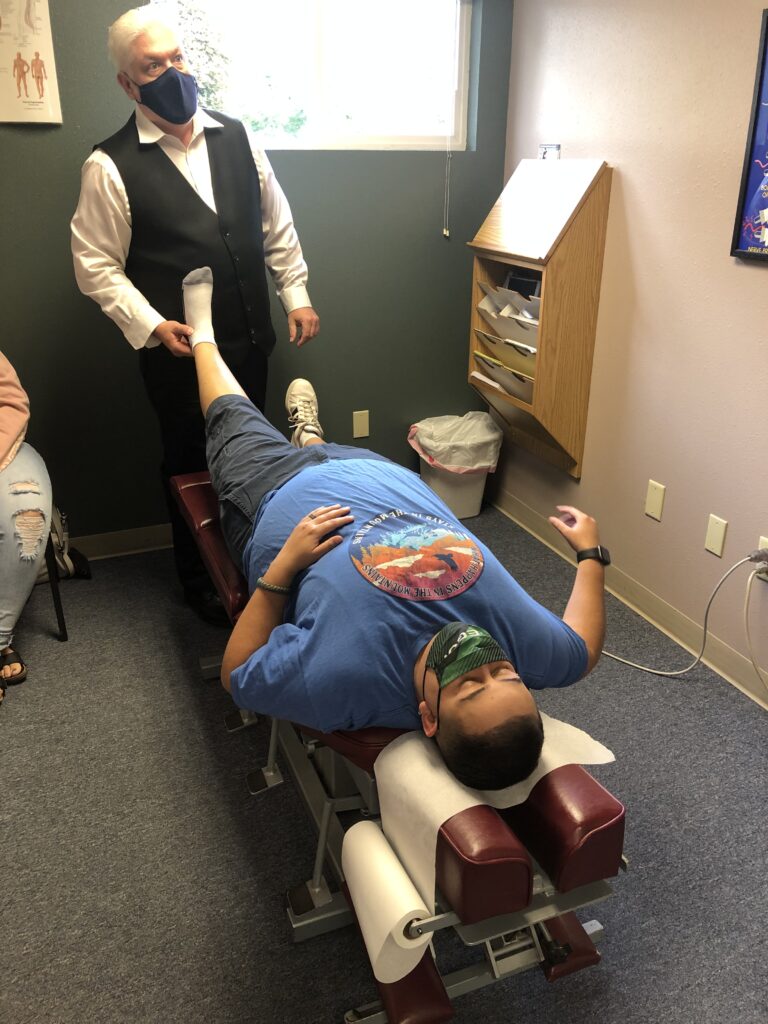You might not realize how much your daily habits affect your spinal alignment and posture. By focusing on a few key practices, you can greatly improve your overall well-being. For instance, strengthening your core muscles plays a vital role, but that's just the beginning. Adjusting your workspace and integrating mindful movements into your routine can further enhance your posture. Curious about how these changes can transform your daily life? Let's explore these three essential tips to help you stand taller and feel better.
Strengthen Core Muscles
When it comes to improving your spinal alignment, strengthening your core muscles is crucial. Your core isn't just about having a six-pack; it includes all the muscles that support your spine, pelvis, and abdomen. A strong core stabilizes your body, helping you maintain proper posture and reducing the risk of injury.
To start strengthening your core, incorporate exercises like planks, bridges, and bird-dogs into your routine. Planks engage multiple muscle groups, enhancing stability and endurance. Aim for holding a plank position for 30 seconds to a minute, gradually increasing your time as you get stronger.
Bridges not only work your glutes but also activate your lower back and abdominals. Try doing three sets of 10-15 repetitions. Bird-dogs challenge your balance while working the entire core. Aim for three sets of 10 on each side.
You don't need to spend hours at the gym; even short, focused workouts can make a significant difference. Consider incorporating core exercises into your daily routine, perhaps during breaks or while watching TV. Consistency is key, so make it a habit.
Additionally, pay attention to your breathing during these exercises. Proper breathing helps engage your core muscles more effectively. As your core strength improves, you'll notice better posture and less strain on your spine.
Your daily activities will feel easier, and you'll likely experience less back pain. By focusing on strengthening your core, you're taking a crucial step towards better spinal alignment and overall health.
Adjust Your Workspace
Your workspace plays an essential role in maintaining proper spinal alignment and posture. To create an ergonomic setup, start by adjusting your chair. Make certain it supports your lower back and allows your feet to rest flat on the floor. If your feet don't reach the ground, consider using a footrest. Your knees should be at or slightly below hip level to promote good circulation and alignment.
Next, position your desk at the right height. When sitting, your elbows should be close to your body and form a 90-degree angle. Your wrists should remain straight and not bent upward or downward while typing. If your desk is too high or low, it can lead to strain on your back and arms.
Now, focus on your computer monitor. The top of the screen should be at or slightly below eye level, about an arm's length away. This helps prevent you from leaning forward or looking down, both of which can strain your neck and back. If you use multiple monitors, arrange them in a way that minimizes twisting your body.
Lastly, don't forget about lighting. Verify your workspace is well-lit to reduce eye strain, which can cause you to adopt poor postures as you lean forward to see better.
Practice Mindful Movement
How can practicing mindful movement enhance your spinal alignment and posture? When you engage in mindful movement, you become more aware of your body and how it moves through space. This awareness helps you recognize tension and misalignments, allowing you to adjust your posture before it becomes ingrained. By focusing on your movements, you can develop better habits that promote spinal health.
Start by incorporating mindfulness into your daily activities. Whether you're walking, sitting, or stretching, pay attention to how you move. Notice if you're slouching or favoring one side. Small adjustments, like pulling your shoulders back or aligning your head over your spine, can make a huge difference over time.
Consider adding practices like yoga or tai chi to your routine. These disciplines emphasize controlled movements and breath synchronization, fostering a deeper connection between your mind and body. They encourage you to engage your core, promoting stability and better alignment.
Another effective technique is to take regular breaks during prolonged sitting. Stand up, stretch, and perform gentle movements that encourage spinal mobility. During these breaks, focus on how your body feels as you move. This practice not only alleviates tension but also reinforces proper posture habits.
Finally, remember to breathe deeply. Deep breathing helps to relax your muscles and centers your mind, making it easier to maintain good posture. By consistently practicing mindful movement, you'll cultivate a greater sense of awareness and control over your spinal alignment, ultimately enhancing your overall posture.
Conclusion
By incorporating these three tips into your daily routine, you can greatly improve your spinal alignment and posture. Strengthening your core muscles will provide the support your spine needs, while adjusting your workspace guarantees you're not straining your body during long hours. Finally, practicing mindful movements helps you stay aware of your posture throughout the day. Commit to these changes, and you'll notice a positive shift in your overall comfort and well-being.



